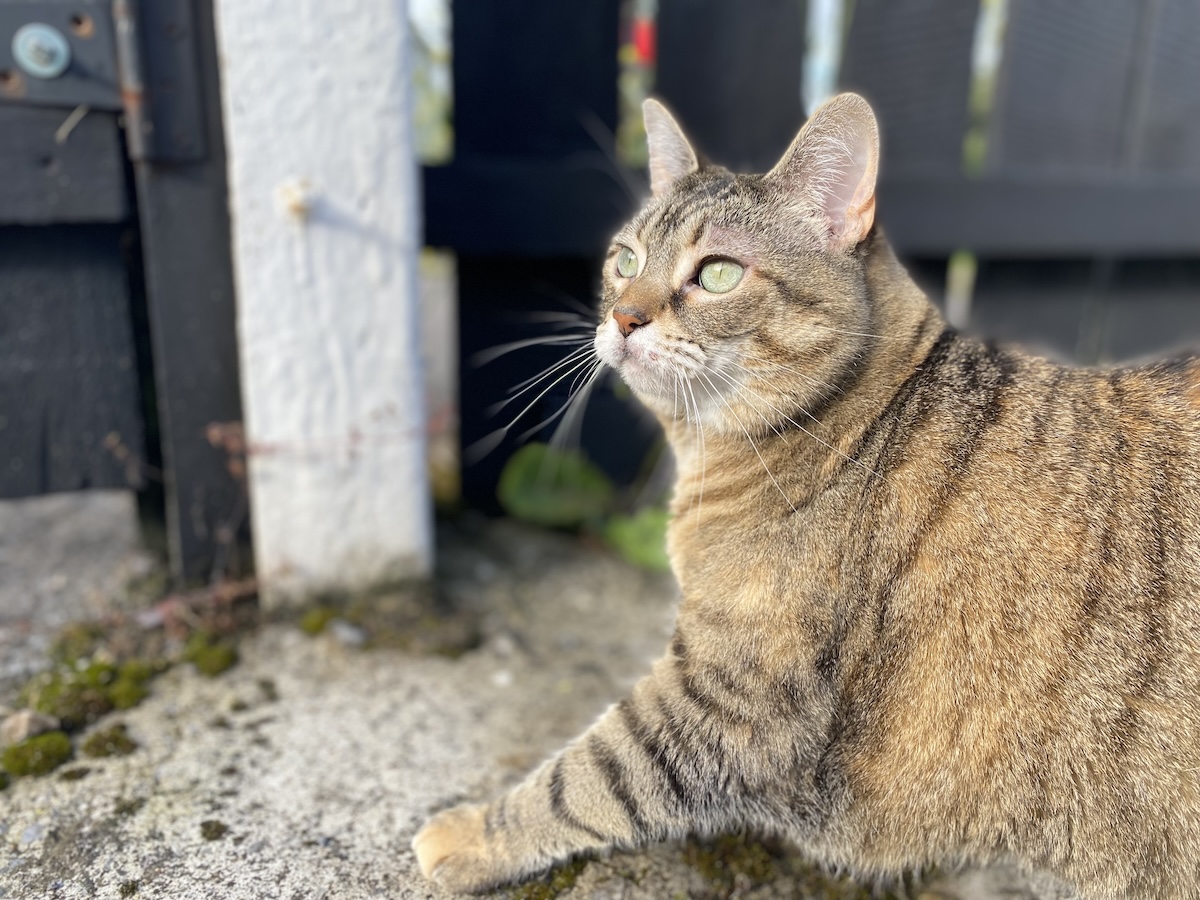
The information is current and up-to-date in accordance with the latest veterinarian research.
Learn more »
Hi, I’m Dr. Lauren! Read my introduction to learn more about me and my two adventurous cats, Pancake and Tiller.
Slip, slop, slap goes the famous Aussie saying, encouraging the use of sunscreen. As humans, thanks in part to large public awareness campaigns such as this one, we’ve become eminently aware of the risks of sun exposure, and most people these days go to great lengths to ensure they use appropriate sun protection.
But what about cats, some of whom spend marked quantities of time outside? Have you ever thought about your cat, and sun protection?
Most pet owners don’t really spend much time considering their cat’s sun exposure. And that in part might arise from the fact that sun exposure in cats can look very different than sunburn in people. Also, they’ve got fur, so many assume that it will be fully protective.
Pancake and Tiller love a good sunbath.
In clinics during the summer months, many clients bring in cats with scabby ears, asking what has brought this on. Or the top of their nose pad, or the bridge of their nose has dark dried crusty debris, and similarly, a pet owner wants to know what has caused it, as it’s only recently shown up, in the last month or two. Would you know that these can be signs of sun exposure and skin damage in cats? Well, they are probably two of the most common signs of actinic or solar keratitis in cats: i.e. pathological sun exposure.
As we head into the hottest and sunniest months of the year in the Northern Hemisphere, it’s great to be able to increase awareness that indeed- cats can get sun damage to their skin, and even skin cancer. Because this skin cancer is quick-growing and locally invasive, it can necessitate fast surgical responses, including removal of a cat’s ears, or even their nose. Light-haired cats, or those with light haircoats in sensitive areas such as the ears and face, seem to be particularly at risk.
Pancake enjoying a sunny spot on the bed.
As a cat owner, what can you do to help? Well, consider keeping your cat indoors during the hours of the most direct sun to limit their UV exposure. When they are outside, offer them places outside where they can have shade, such as cubbies. Pet-safe sunscreen is also becoming more readily available, so consider applying it to your cat’s sensitive areas, especially if they are at risk.
Easy solutions and an ounce of prevention are worth a pound of cure- especially in the case of feline sunburn. So next time you slip, slop, slap, don’t forget that your feline friend might benefit from some of the same sun awareness!






